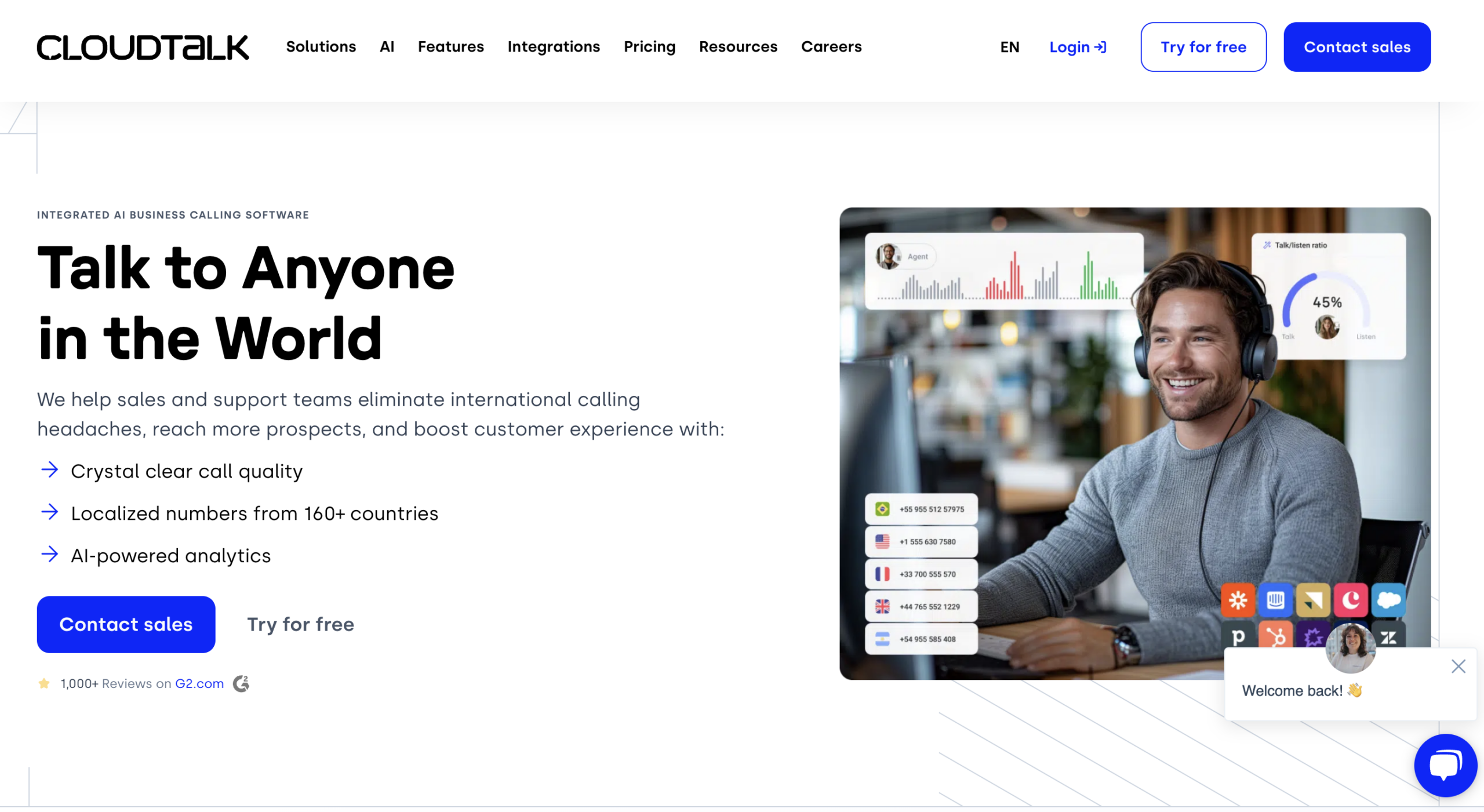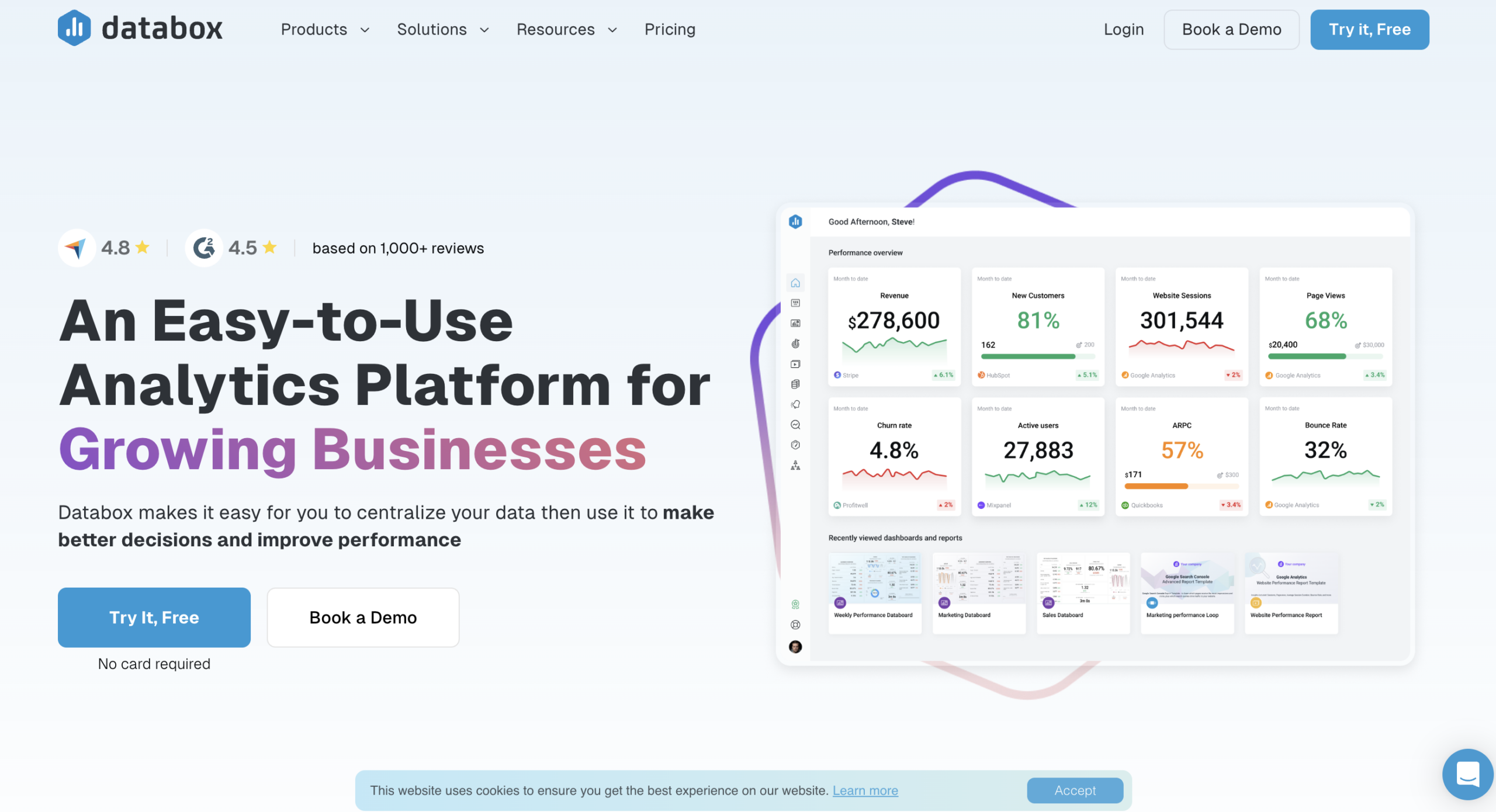
Did you know they only spend about 33% of their time actually selling? The rest of their day is filled with tasks like administrative work (which takes up about an hour) and the never-ending search for new prospects.
So, with sales being tough in 2025, how can sales pros hit their quotas?
The key is setting realistic yet ambitious sales quotas. And it all starts with understanding the nature of sales quotas.
Key Takeaways:
- Think of sales quotas as the targets in a game, guiding sales teams on how much they need to sell in a set period. They can focus on revenue, units sold, or new customers, helping measure performance and keeping everyone on track.
- Sales quotas are like roadmaps for your team, providing clear goals and boosting motivation. They help track progress, align with company goals, and ensure everyone knows what they need to achieve.
- Sales quotas come in different types to fit various goals. There are activity quotas (actions taken), volume quotas (items sold), profit quotas (profit made), and more. Each type helps focus on different aspects of the sales process.
- Setting sales quotas isn’t always easy. Common hurdles include unrealistic targets, market changes, and lack of data. The key is to stay flexible, use solid data, and communicate clearly.
What is a Sales Quota?
A sales quota is a target set for sales teams or individual salespeople, defining the amount they need to sell within a specific period (let’s think about it as a part of inbound & outbound sales strategy). It defines how much they need to sell within a certain time frame.
Just imagine it as the target in a game, giving direction and something clear to aim for.
Specifically, sales quotas can be based on different things, like the amount of revenue, the number of units sold, or new customers acquired (about it—a bit further). They act as benchmarks to measure how well the team is doing, keep everyone motivated, and ensure that everyone is working towards the company’s big goals.
But effective sales quotas aren’t just random numbers. They’re carefully set based on market analysis, historical data, and the unique strengths of each salesperson.
This way, they’re challenging but achievable, pushing the team to perform their best while staying realistic.
Give Cloudtalk a go and crush those sales quotas with ease!
Why is it Necessary to Set a Sales Quota?
Without quotas, it’s easy to lose focus and direction.
Sales quotas help align individual efforts with the company’s big-picture goals, breaking down those larger ambitions into achievable tasks. It also adds a level of accountability; when salespeople know their targets, they tend to take more ownership of their work.
Plus, when everyone knows their targets, it keeps everyone on the same page because they have a clear goal to hit. It’s also a great way to measure success—by comparing actual sales to the quota, you can quickly see who’s knocking it out of the park and who might need a bit more support.
But here’s the kicker: you’ve got to choose the right quota type that fits your business.
What are the Types of Sales Quotas?
Sales quotas come in different flavors, each designed to focus on specific aspects of the sales process.
Note
Activity quota → actions salespeople take
Volume quota → quantity of items sold
Profit quota → profit generated from sales
Combination quota → mix of different quotas
Forecast quota → market prediction-based targets
Revenue quota → total sales dollar amount
Let’s break down the main types (with sales quota examples):
Activity Quota
An activity quota focuses on the actions salespeople need to take, like the number of calls made, emails sent, or meetings scheduled.
For example, a sales rep might have a quota to make 50 cold calls a week.
You can use free sales tools to manage it, and they’ll scale as your company grows.
This type of quota emphasizes effort and process, ensuring that the team is consistently working towards generating leads and closing deals.
Volume Quota
A volume quota is all about the quantity of items sold.
For instance, a car salesperson might have a quota to sell 10 cars a month.
This type of quota is straightforward and easy to track, making it a common choice for many businesses.
Profit Quota
Profit quotas are centered on the profit generated from sales rather than just the sales volume.
For example, a salesperson might need to achieve $5,000 in profit each quarter.
This ensures that salespeople focus on high-margin products and negotiate deals that are profitable for the company.
Combination Quota
Combination quotas mix different types of quotas, like activity and volume quotas, to give a well-rounded performance measure.
For instance, a salesperson might need to make 30 cold calls through dialers (activity quota) and sell 15 products (volume quota) each month.
Keeping track of these quotas can be tough without the right tools. That’s where CloudTalk comes in handy.
Here’s what one of our users has to say:
This approach ensures that various aspects of the sales process are covered.
Forecast Quota
A forecast quota is based on market predictions and sales forecasts. It aligns targets with what’s expected to happen in the market.
For example, if market research predicts a surge in demand for eco-friendly products, a salesperson might need to sell 20 units of a new green product.
This helps the team stay aligned with market trends and company expectations.
Revenue Sales Quota
Revenue quotas focus on the total sales dollar amount.
For example, a tech salesperson might have a quota to achieve $100,000 in sales each quarter.
This type of quota encourages salespeople to pursue high-value deals, driving significant revenue growth for the company.
Pro tip: Seeking the right tool to manage your sales quotas? In any type of quota, CloudTalk can assist with its impressive analytics (aka intelligence, for the savvy).
See how CloudTalk’s Analytics drives more sales
Think you know it all? Think again! Here is the difference between a sales quota and a goal. Let’s break down the difference between a sales quota, a goal, and a target.
How Does a Sales Quota Differ from Other Sales Indexes?
Sales quotas, goals, and targets can be confusing. Let’s discover the differences.
Sales Quota vs. Sales Goals
As you already know, a sales quota is a specific target set for a sales period, like selling $100,000 worth of products in a quarter. It’s a concrete number that the sales team needs to hit.
On the other hand, sales goals are broader and more strategic. For example, a sales goal might be to expand market share fo 10% or improve customer satisfaction (during NPS).
Goals are the big picture, while quotas are the specific steps to get there.
Sales Quota vs. Sales Targets
A sales quota is like a must-hit number for salespeople—it’s what they’ve got to achieve. It’s usually tied to how they’re reviewed and what they get paid.
On the flip side, sales targets are more like checkpoints or milestones. They help salespeople see how they’re doing along the way.
For example, a target might be hitting $50,000 in sales by mid-quarter, while the quota is aiming for the full $100,000 by quarter’s end.
Targets help you stay on track, but quotas are the required outcomes.
Here’s a quick breakdown to help you grasp the distinctions between sales quotas, goals, and targets.
Aspect
Sales quota
Sales goals
Sales targets
Definition
The specific sales number you need to hit
Big-picture objectives we’re aiming for
Checkpoints to see if we’re on track
Purpose
Keeps you motivated and measures your performance
Guides our overall strategy
Helps us track progress towards the quota
Time frame
Usually short-term, like monthly or quarterly
Long-term, often yearly or more
Short-term or intermediate, like weeks or months
Flexibility
Fixed and set in stone
Flexible and can change as needed
Adjustable based on how things are going
Impact on Compensation
Directly affects your bonuses and reviews
Influences the overall direction of the company
More about keeping you on track than pay
Focus
Specific results you need to achieve
Overall growth and improvement
Steps to reach the bigger quota
Example
Sell $100,000 worth of products this quarter
Expand our market share by 10% this year
Hit $50,000 in sales by mid-quarter
Ever wondered how to set quotas? We’re here to show you how.
What are the Approaches to Setting a Sales Quota?
When it comes to setting sales quotas, there are a few different ways to go about it.
Note
Top-down approach → management sets targets
Bottom-up approach → sales team estimated
Hybrid approach → combination of both methods
Let’s break down the main approaches:
Top-Down Approach
In the top-down approach, the big bosses set the sales quotas and pass them down (during virtual meetings) to the team. Imagine management deciding on a $1 million sales target for the year and then splitting that number among all the salespeople.
This method ensures that the quotas align with the company’s overall goals, but it might not always take into account the specific challenges and opportunities each salesperson faces in their territory.
Bottom-Up Approach
The bottom-up approach flips things around. Here, the sales team helps set the quotas based on their on-the-ground knowledge and experience. Salespeople estimate what they can achieve based on past performance and market conditions.
For example, a rep might look at their pipeline and market trends and propose their own target. These individual quotas are then added up to form the company’s overall goal.
This way, quotas tend to be more realistic and attainable since they’re based on actual insights from the field.
Hybrid Approach
The hybrid approach is a mix of both top-down and bottom-up methods.
Senior management sets an overall target, but then works with the sales team to refine and adjust individual quotas. For example, management might start with a $1 million goal, then sit down with each salesperson to tweak their targets based on their input and insights.
This approach balances the company’s strategic goals with realistic expectations, making the quotas both challenging and achievable.
Alright, you’ve figured out how to set it up. Now, let’s talk about sizing it right—here’s how to calculate quotas.
How to Calculate a Sales Quota?
Calculating a sales quota might seem complicated, but it’s actually pretty straightforward when you break it down into simple steps.
Note
1. Choose quota type → decide on quota focus.
2. Define the time period → set the timeframe.
3. Establish baseline → analyze past data.
4. Set activity goals → define actionable steps.
5. Communicate expectations → share targets clearly.
Let’s walk through the process together to make sure your sales team has clear, achievable targets.
Step 1. Choose Your Quota Type
Are you aiming for a revenue quota, where you set a target dollar amount, or an activity quota, focusing on actions like cold calls made?
Picking the right type depends on your business goals and what you want to achieve.
Step 2. Define Your Time Period
Next, figure out the time frame for your quota. Are you setting weekly, monthly, quarterly, or yearly targets? For example, if you’re setting a quarterly revenue quota, you’ll need to hit your goal within three months.
Having a clear time period helps keep everyone on track and focused.
Step 3. Establish Your Baseline
Now, find your starting point. Look at past sales data to see what’s been achieved before. For instance, if your team sold $500,000 last quarter, use that as a baseline to set realistic and challenging targets.
This ensures your quotas are grounded in reality.
Step 4. Set Activity Goals
With your baseline in mind, set specific activity goals to reach your quota. If you’re aiming for a revenue quota, break it down into actionable steps. How many sales calls, meetings, or follow-ups will it take to hit your target?
For example, you might decide that making 100 calls a week is necessary to achieve your sales goal.
This makes the quota feel more achievable by outlining clear actions.
Step 5. Communicate Expectations
Finally, make sure everyone knows what’s expected of them. Clearly communicate the quota, the time period, and the activity goals to your sales team. Regular check-ins and updates can help keep everyone motivated and on track.
When everyone understands the goal and how to get there, it’s easier to work together to achieve it.
Here’s what you’ll come up against when managing sales quotas.
What are the Challenges of Setting a Sales Quota?
Setting sales quotas isn’t always smooth sailing. Here are a few common hurdles you might face:
- Unrealistic expectations → setting quotas too high can demotivate your team and lead to burnout. It’s important to strike a balance between challenging and achievable goals. Use past data and market insights to keep things realistic.
- Changing market conditions → markets can shift quickly, impacting your team’s ability to hit their targets. Stay flexible and adjust quotas as needed to reflect current conditions.
- Lack of data → good data is crucial for setting accurate quotas. Without it, you’re guessing. Make sure you have solid data collection and analysis processes in place.
- Motivational issues → quotas that are too easy or too hard can affect motivation. Finding the sweet spot that pushes your team without overwhelming them is key.
- Communication gaps → clear communication is essential. Make sure everyone understands how quotas are set and why. Regular check-ins can help keep everyone on the same page.
- Individual differences → not all salespeople are the same. Tailoring quotas to fit individual strengths and market conditions can be more effective than a one-size-fits-all approach.
The easy part? Here are the tools to not only set your quota but also manage and achieve it.
What Tools Can Be Used to Reach Your Sales Quota?
Having the right tools can really make a difference when it comes to setting and hitting your sales quotas. Here are some great options:
Cloudtalk

CloudTalk is a cloud-based call center and business phone system built to maximize your customer support efforts across all channels.
It supports international numbers for 160+ countries, and you can instantly start optimizing your workflows with advanced features, including IVR, click-to-call, power dialers, and more.
Want to hit those sales targets? Schedule a Cloudtalk demo and see how!
Reply.io

Reply is like having an extra pair of hands in your sales team. It provides AI SDRs to automatically define and engage with potential prospects.
Imagine not having to spend hours on cold outreach—Reply does it for you. It helps you build and manage email campaigns, follow-ups, and more, so you can focus on closing deals.
Hubspot

You might wonder: Do I need a sales quota calculator? The answer is a firm “no!”
HubSpot is your go-to for managing deals and tracking sales pipelines with quotas. It offers a clear, visual way to see where every deal stands, from initial contact to closing.
You can set up automated reminders, and phone integrations, track email opens and clicks, and even integrate with your calendar to book meetings directly.
HubSpot keeps everything organized, so you never miss a step in your sales process.
Databox

Databox helps you create detailed, easy-to-understand sales reports (call center reporting as well).
You can connect it to all your data sources—like your CRM, Google Analytics, and social media accounts—to get a comprehensive view of your performance.
For instance, you can set up dashboards that show your progress toward sales quotas, identify which products are selling best, and pinpoint where you might need to adjust your strategy.
Crushed it? Now, Keep The Momentum Going
Setting sales quotas in 2024 is all about finding the sweet spot between ambition and realisticity. Understanding sales quotas and why they’re important is the first step.
They guide your team, help track success, and ensure everyone knows what they need to achieve.
Challenges are part of the game. Staying flexible and using clear communication can help you navigate these bumps in the road.
And don’t forget to use the right tools—platforms like Reply.io AND CloudTalk will automate tasks, manage data, and keep your team on track.
So, here’s to hitting those quotas and making 2024 a fantastic year for sales!
You’ve got this right with Cloudtalk!

Hi, I’m Eugene Suslov, Head of Content at Reply.
With 10+ years of experience in marketing and business development, I help B2B teams turn their blogs into lead-generation tools with content, SEO, and automation without an additional budget or huge teams.

















